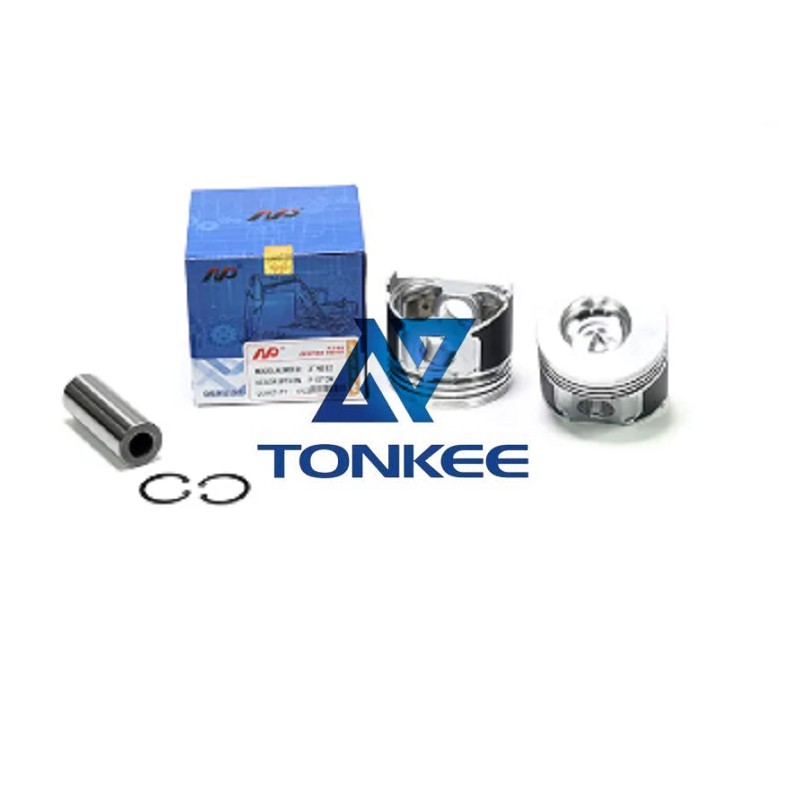
Yanmar's engine pistons are typically constructed from high-strength, lightweight materials like aluminum alloy or cast iron.
These materials are chosen for their durability and heat resistance, essential for withstanding the extreme conditions within the combustion chamber.
Piston Design:
Piston design varies based on engine model and specifications. However, common features include a crown, skirt, and ring grooves. The crown is the top surface of the piston, while the skirt extends downward to guide the piston's movement within the cylinder bore. The ring grooves hold the piston rings that help seal the combustion chamber.
Piston Size and Dimensions:
The size and dimensions of the piston are engineered to precisely match the cylinder bore of the engine. This ensures a snug fit, which is crucial for maintaining proper compression and efficient combustion. The diameter, height, and design of the piston must be in accordance with the engine's specifications.
Compression Height:
The compression height is the distance between the center of the wrist pin bore and the top of the piston. This specification directly affects the engine's compression ratio, which is a critical factor in determining power output and fuel efficiency. Yanmar engineers these pistons to achieve the desired compression ratios.
Wrist Pin and Connecting Rod Compatibility:
The wrist pin bore on the piston connects to the connecting rod through the wrist pin, which is essential for transmitting the reciprocating motion of the piston to the crankshaft. The compatibility of the piston with the wrist pin and connecting rod is vital for the smooth and efficient operation of the engine.
Crown and Combustion Chamber Design:
The piston's crown design is engineered to promote efficient combustion.
It can feature various shapes and contours to optimize air and fuel mixture turbulence, which enhances combustion efficiency and reduces emissions. The design of the combustion chamber in the piston crown is crucial for achieving a proper air-fuel mixture and efficient combustion.
Piston Rings:
Piston rings are essential components that seal the combustion chamber, preventing gas leakage and ensuring efficient power generation. Yanmar's pistons are designed with grooves to accommodate piston rings that have specific specifications for compression, oil control, and heat resistance.
Heat Dissipation Features:
To withstand the high temperatures generated during the combustion process, Yanmar's engine pistons often have features such as internal cooling galleries or enhanced heat-resistant coatings. These features help dissipate excess heat, ensuring the longevity of the piston.
Balance and Weight:
Properly balanced pistons are essential for smooth engine operation, minimizing vibrations and reducing wear on components. Yanmar pays meticulous attention to the weight and balance of their pistons to optimize engine performance.
Durability and Longevity:
Yanmar's pistons are designed to endure the demanding conditions of an excavator engine, with a focus on longevity and minimal maintenance requirements. The choice of materials, precision manufacturing, and durable coatings all contribute to the piston's durability.



 English
English Русский язык
Русский язык



